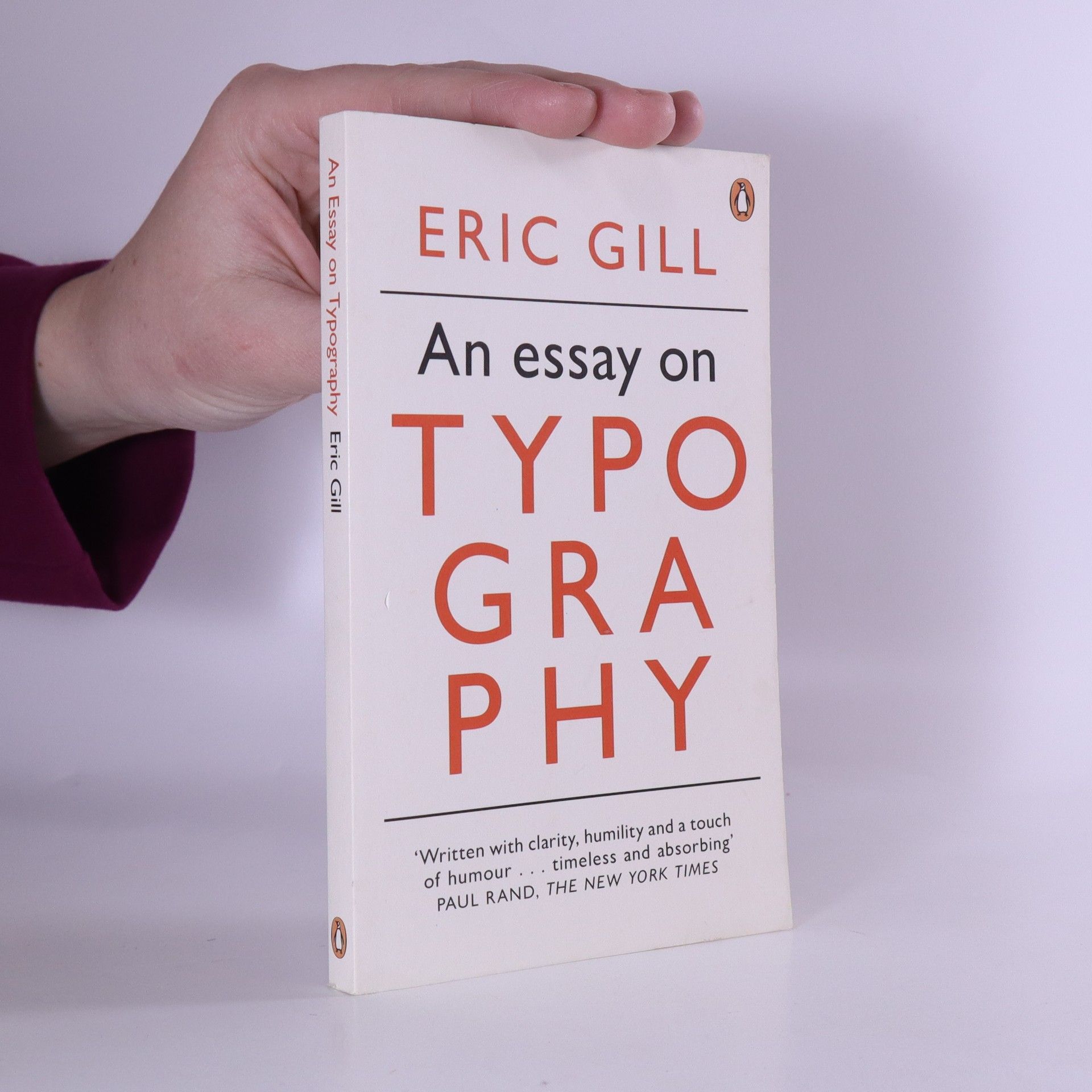An essay on typography
- 144 stránok
- 6 hodin čítania
Explores the place of typography in culture. This title is also a moral treatise celebrating the role of craftsmanship in an industrial age.
Arthur Eric Rowton Gill bol anglický sochár a dizajnér písma, spojený s hnutím Arts and Crafts. Jeho diela sa vyznačujú hlbokým porozumením materiálu a remeselnej zručnosti. Skúmal prepojenie medzi umením, spiritualitou a každodenným životom. Jeho ikonické návrhy písma dodnes ovplyvňujú dizajn a typografiu.







Explores the place of typography in culture. This title is also a moral treatise celebrating the role of craftsmanship in an industrial age.
The second edition of this innovative book provides 'geo-relevant' chemistry in a highly accessible format. The environmental, geological and topical relevance has been enhanced, providing the ideal text to explain the relevance of chemical fundamentals to geological and environmental processes.
Focusing on providing a deeper understanding of the Revolution, the book aims to explain its complexities to English readers. It seeks to clarify not only the events and processes of the Revolution but also to illuminate the unfamiliar issues that have emerged as a result. Rather than retelling historical facts, it emphasizes interpretation and context, making it accessible for those looking to grasp the significance and implications of this pivotal period.
Focusing on the human form, Eric Gill's Twenty-five Nudes serves as both an artistic manifesto and a visual collection. The book outlines his philosophy on the portrayal of the body, emphasizing his belief in a specific aesthetic approach. Through a blend of text and imagery, Gill articulates his vision, making it a significant exploration of art and representation.
The introduction by Catherine Pickstock highlights the historical erosion of transcendental meaning in the Real over 600 years, leading to a contemporary existence characterized by an "unbearable lightness of being." This shift has created a landscape filled with superficial nihilism, where numerous possibilities lack substantive value. The book delves into these themes, exploring the implications of a reality stripped of deeper significance and the resulting cultural malaise.
Eric Gill, a multifaceted artist known for his sculpting and typeface design, was also a radical religious and social philosopher. He believed that life transcended art, viewing it as the ultimate expression of humanity. His holistic perspective integrated art, work, and spiritual values, reflecting his commitment to a life of purpose and meaning beyond mere aesthetics.
Recognized for its cultural significance, this work contributes to the foundational knowledge of civilization. Scholars have highlighted its importance, indicating its role in shaping understanding and perspectives within historical and social contexts.
"This original collection gathers the finest woodcuts of one of the most creative and prolific English artists of the early 20th century. Ranging from the religious to the erotic, featured designs include images inspired by The Song of Songs, The Canterbury Tales, and The Four Gospels. A feast for the eyes and an important and accessible reference. "--
The second title in an exciting new series called Unicorn Icons, bringing out- of-print biographies and autobiographies of celebrated artists and key figures from the world of art back into print.